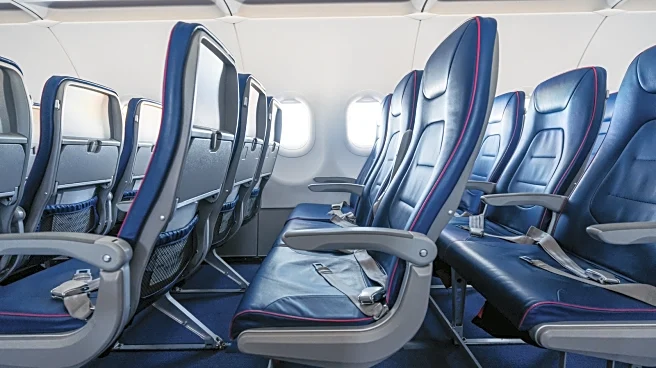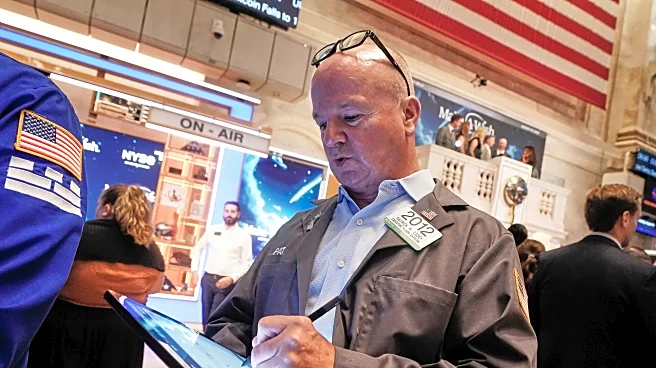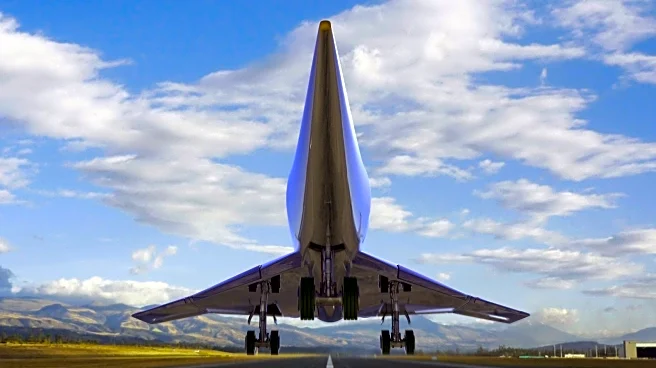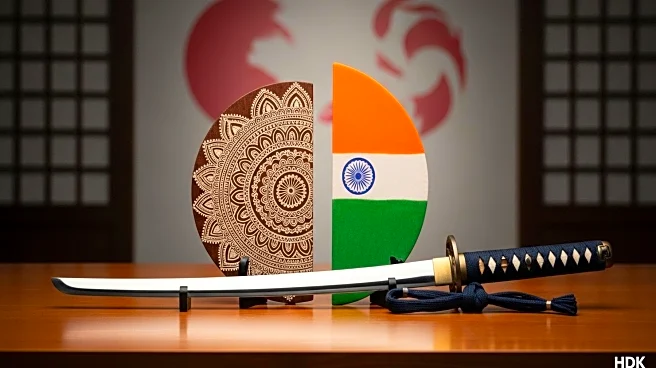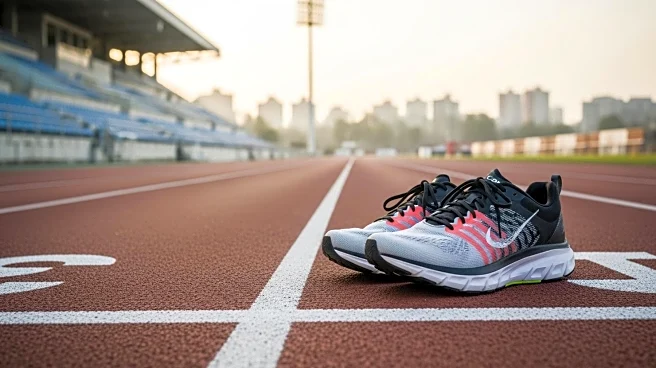
In a world where we're forced to watch influencers fly in the coolest business class suites ever seen, economy has never seemed less sexy. Ignoring the insane fact that you're still hurtling through the air at 550 mph, turning a journey that once took nine months (if you survived) into nine hours, knowing what's on the other side of the curtain can make flying economy feel rough.
In reality, there's never been a better time to fly economy. As technology improves, flying becomes more popular, and expectations
rise, airlines around the world are racing to build the best economy seats possible, ensuring that the vast majority of their traveling clientele get to their destination in comfort and style. Seats are getting bigger, entertainment options are on a different level than ever before, and even the notorious in-flight meals are a far cry from the mess they were in years gone by.
And airlines aren't stopping there. Plenty of carriers are making economy seats better than ever in 2025, with even more improvements on the horizon. Some are completely overhauling their old products, while others are improving their current offerings, but one thing's clear: Flying economy has never been better. In this article, we'll take a look at all the airlines that are rolling out improvements to their economy seats in 2025. Some are already out there, while others are arriving later in the year. Keep an eye out for all of them and rest assured you won't be sitting in a dusty old seat. And if you do, don't worry — check out these genius hacks to make flying economy more comfortable.
Read more: The Four Unspoken Rules For The Airplane's Empty Middle Seats
Japan Airlines

Japan Airlines has long been regarded as one of the best airlines in the industry. From its ultra-luxurious first class experience to its exceptional customer service, flying any cabin with JAL is a joy. In fact, the experience is so good that it has won SkyTrax awards for "Best Economy Seat in the World" for the past six years. The Asian airline has made things even better for its economy class passengers in 2025. While not as innovative as its free domestic Japan flights program to combat overtourism in Tokyo, it released newly designed seats earlier in the year.
The major change is the seat pitch. While it will vary slightly depending on the exact aircraft being used, the average distance between seats is now around 34 inches — one of the largest seat pitches in the industry, perfect for taller travelers. It's a similar story with the recline. Its new seats will now feature a 6-inch range of motion, also one of the best in the space. The width has been increased slightly to allow for 19 inches of space.
The seats are well-equipped, too. Each features an international charging port, a Type-A and C USB port, and a new 13.3-inch 4K entertainment screen, making it easy to pass the time on board. For comparison, some airlines' business class seats have similar-sized screens. The little tech shelf with built-in Bluetooth is also excellent. It flaps down from the back of the seat, allowing you to rest your mobile phone or tablet instead of using the entertainment screen, or just use it as a place to store stuff while it charges. Currently, you'll find the seats on most of the carrier's fleet of Airbus A350-1000s and Airbus A350-900s, but the airline will roll them out more broadly as time goes on.
All Nippon Airways

The Japanese are stealing the show when it comes to economy seats. Not content with having one of the best in-flight dining experiences in the world, ANA (or All Nippon Airways) is also leading the way with its new and improved economy class seats. Whether it's friendly competition between two regional rivals or an all-out race for supremacy, the changes are similar to those of Japan Airlines. The airline has already set new standards with "The Room," its extravagant new premium class experience, but it has also taken some of that luxury and sprinkled it on its economy offerings.
The seat pitch is almost identical to JAL, with an average of 33 to 34 inches across the board. These dimensions shift slightly depending on the aircraft, route, and the exact position of the seat in the plane. Either way, it remains at the top of the market. A clever design in the back of the seat in front allows passengers to enjoy an extra inch of space around the knees, allowing a little more freedom of movement without encroaching on fellow passengers' space. The airline has also tacked on 1.5 times the recline of the previous model, bringing the full range up to 7 inches for maximum comfort.
The tech setup is also impressive. The new touchscreen displays are thinner than before, saving weight and space, but still allowing 13.3 inches of viewing space. They really are massive screens that are worlds apart from some of the competitors. The new seats are featured on the airline's Boeing 787-9 Dreamliners and are part of a larger overhaul of the fleet.
Swiss International

Never ones to skimp on luxury, the Swiss flagship carrier already announced its unbelievable new Grand Suite concept in First Class, but it's also making some unique changes to its own economy cabins. While most of the other airlines on the list's changes focus solely on technical aspects, SWISS has added some flourishes to improve the overall customer experience.
That's not to say the physical product hasn't changed. Its long-haul aircraft have been completely refitted with some of the most stylish, comfortable, and practical cabins in the world. The European carrier has gone chasing the Japanese dimensions, matching the seat width and pitches of 19 and 33 inches, respectively. The seats also boast a 6-inch recline, pushing them towards the top of the leaderboard in that respect. Even the headrest is impressive. Each seat has a six-way adjustable headrest to help soothe even the most sensitive necks. A 13.3-inch 4K OLED screen has also been added, boosting the entertainment options greatly for passengers and giving them a little taste of the upper cabins. The bedding and cushions used for all seats in the plane have also been improved.
It's the SWISS Senses concept that's drawing the most interest. Economy and Premium Economy passengers are now treated to revamped culinary offerings, with locally produced Swiss products, reusable, high-quality cutlery, and even post-takeoff apertifs. The cabins throughout the plane will be lit with specially programmed "human-centric" patterns to minimize jet lag, and a trademarked SWISS scent will now fill the cabin, adding to the feeling of luxury. It's an interesting move, taking even the most basic product into a realm of comparative elegance.
Southwest Airlines

Things are improving in the United States, too, with Southwest Airlines improving its economy cabin as part of its continuing business-wide overhaul. The airline has raised eyebrows and potentially lost a significant portion of its customer base by moving away from its more relaxed policies and charging for things like seat selection and luggage, and even adding premium seats. In the past, economy seats were the only option on a Southwest flight.
It's important to remember that Southwest, despite now having loftier goals, is still a value-centric airline, so the improvements will be significantly less impressive than those of the previously mentioned airlines. Using the same in-cabin designers as Swiss, ANA, and Japan, it has brought its seat pitch up to a maximum of a respectable 32 inches, with seat width sitting at 17.8 inches. The padding and cushions on the seats are all getting an upgrade, and the headrests on each will now be adjustable as well. A nice new feature is the device holder close to the USB-A/C ports, allowing passengers to set their phones or tablets securely and watch whatever they've downloaded for the trip. There are no screens on Southwest planes, so no upgrades to mention there.
Southwest is rolling the changes out over the next year or so, so there's a good chance you may not have one of the newer-look aircraft in the immediate future. However, keep an eye out as more are finished. Whether the new attributes will be enough to earn back the trust of the loyal customers who loathe the new changes remains to be seen.
Delta Air Lines

Delta has always had a reputation for putting more thought into economy than most of its U.S. competitors, and it has taken another step forward in 2025. As well as a partnership with designer Missoni for its luxe new first-class (or Delta One), the most noticeable improvement comes from the cushions themselves, with new memory-foam padding installed across its long-haul economy seats. This doesn't sound like much on paper, but it makes a huge difference after hours in the air. In theory, the cushions mold to the body, reducing sore backs across the board. For an airline that already scores high on reliability and customer satisfaction, these changes cement its position as the most comfortable of the big three U.S. carriers. We won't go into the classifications of its seats, as that would take an article in itself.
The airline's tech and entertainment setup also remains a strong selling point. Delta is leading the U.S. market in free Wi-Fi, making it available to SkyMiles members on most domestic and long-haul flights. That's a serious upgrade in a space where in-flight internet has long been seen as a luxury. Pair that with Delta Studio, the airline's entertainment system, and passengers have plenty to do without needing to drain their devices. Bluetooth has been added to newer aircraft, so you can finally use your own headphones instead of the cheap wired sets offered onboard.
The improvements are already rolling out across Delta's fleet, so there's a good chance you'll stumble onto one of the new features. It's maybe not as exciting as other changes, but between softer seats, better connectivity, and strong service, it's looking like a better way than ever to cross the U.S. or head across the Atlantic.
Qantas

Qantas has always been in a tough position. The relative isolation of Australia compared to many of its competitors means that virtually all of its international flights verge on long-haul. A strong economy class is pivotal to the airline's success and always has been, but things are changing even more now with the arrival of its Project Sunrise flights — ultra-long flights between Sydney and New York or London. The new routes are set to be the longest flights in the world, and while they aren't flying until 2027, the new cabins are already being fitted.
Seats on the A350-1000 fleet are being re-engineered for marathon flights, offering more pitch, more recline, and improved support compared to older designs. The numbers themselves speak volumes: 33 inches of pitch, 18 inches of width, and up to 6 inches of recline. While it doesn't sound extraordinary (especially as it's comparable to the new Japanese seats), it's the design that is most interesting. Qantas worked with sleep researchers and aviation doctors to come up with the new seats, hoping to make the brutal flight times tolerable. The headrests and seats boast extra ergonomic support, while every passenger will have access to dual USB-C charging ports, a large 13.3-inch HD screen, and Bluetooth audio connectivity.
The most intriguing addition to the Aussie carrier's economy class is the "Wellness Zone," a walk-up stretch area built into the aircraft. On these 20-hour-plus flights, passengers will be encouraged to leave their seats, stretch, hydrate, and grab healthy snacks to fight fatigue. It's a small but significant innovation that recognizes what sitting for nearly 20 hours does to the human body. More than anything else, it'll reduce the opportunity for your fellow passengers to stand over your seat, stretching in the aisle.
Air New Zealand

Despite being one of the lesser-known carriers for Americans, Air New Zealand is an immensely innovative airline. In 2025, it's pushing that reputation further, rolling out its fully refurbished Boeing 787-9 Dreamliners. The economy cabin has been completely overhauled, from the look to the physical seat. The airline has added improved cushioning, slimmer backs creating extra knee-space, and a whopping 8 inches of recline. There are even some newly added smart storage features to help keep the space tidy and free of clutter. If you can't tell, it's one of the most comfortable economy classes on the planet. And we haven't even got to the cool stuff yet.
Technology is where Air New Zealand really steps up. As seen on other airlines, each new economy seat now comes equipped with a larger, 13-inch HD seatback screen, packed with entertainment, destination content, and the ability to connect your own device (No 4K, though). Bluetooth audio pairing is included, meaning your headphones are fair game. There are also USB-A and USB-C ports at every seat, plus AC outlets in some rows, ensuring your phone, tablet, or laptop never runs out of juice on long trips.
And then there's the SkyNest — a world-first economy bunk-bed concept. While not slated to launch until early 2026, it's worth mentioning here. Air NZ has been testing and preparing for its introduction, and the refurbished aircraft are already being fitted to accommodate it. The Skynest will allow economy travelers to book a few hours of lie-flat rest in a dedicated bunk area during ultra-long-haul flights, something unheard of at this price point. It's an extension of its SkyCouch concept, where you could book three seats in economy, fold them down, and lie across them. Using SkyCouch, the question of which class is best to book when flying with kids is easy. Even without SkyNest, the new cabins already make Air New Zealand's economy one of the most comfortable in the skies.
Singapore Airlines

Singapore Airlines is often viewed as the pinnacle of luxury cabin design, but its economy class deserves just as much attention. In 2025, the airline introduced one of the most meaningful upgrades in recent memory: Free, unlimited in-flight Wi-Fi for all passengers. Long associated with higher-end seats, economy passengers can now work, stream, message, and more on long-haul routes without restriction. This is a major improvement and an important nod to the value of the customers on an airline that runs some of the longest routes around.
The Wi-Fi remains the biggest change, but the seats themselves have long been some of the best in the industry. With widths of around 19 inches, they're among the widest you'll find anywhere, and with reclines of up to 6 inches, they're doing phenomenally well compared to other airlines. Combined with thoughtful cushioning and ergonomic design, these seats are far more comfortable than what most travelers expect from economy. The KrisWorld entertainment system remains one of the strongest in the market, with hundreds of movies, TV shows, and interactive features installed on each seat.
What ties it all together, though, is the service. Singapore Airlines is renowned for its detail-oriented, personal, and high-end service, even in economy. Meals in lower-priced cabins are consistently praised for quality and presentation, the cabins are kept immaculate, and the crew is known for treating every passenger like they matter. Throw the new free Wi-Fi into that mix, and it's easy to see why Singapore's economy class is often regarded as one of the best ways to fly despite not adding nearly as much as its competitors.
Methodology

In this piece, we focused solely on economy class, opting to avoid the confusing distinctions between newer niche seats, such as Premium Economy, Economy Plus, Business Light, or any other variation. Each was picked for one of a number of reasons, but the primary attribute had to be a new economy class seat, an exciting new feature, or, at the very least, some strong refurbishment that has taken place or will take place in 2025. Some, like Swiss, were part of major overhauls of the entire aircraft, while others, like Singapore, have just added game-changing perks like free Wi-Fi. The airlines were found through online research, of which most sources are direct from the airlines themselves or airline specialists reporting on them. All of the information is up-to-date and accurate as of August 2025.
Ready to discover more hidden gems and expert travel tips? Subscribe to our free newsletter for access to the world's best-kept travel secrets.
Read the original article on Islands.
